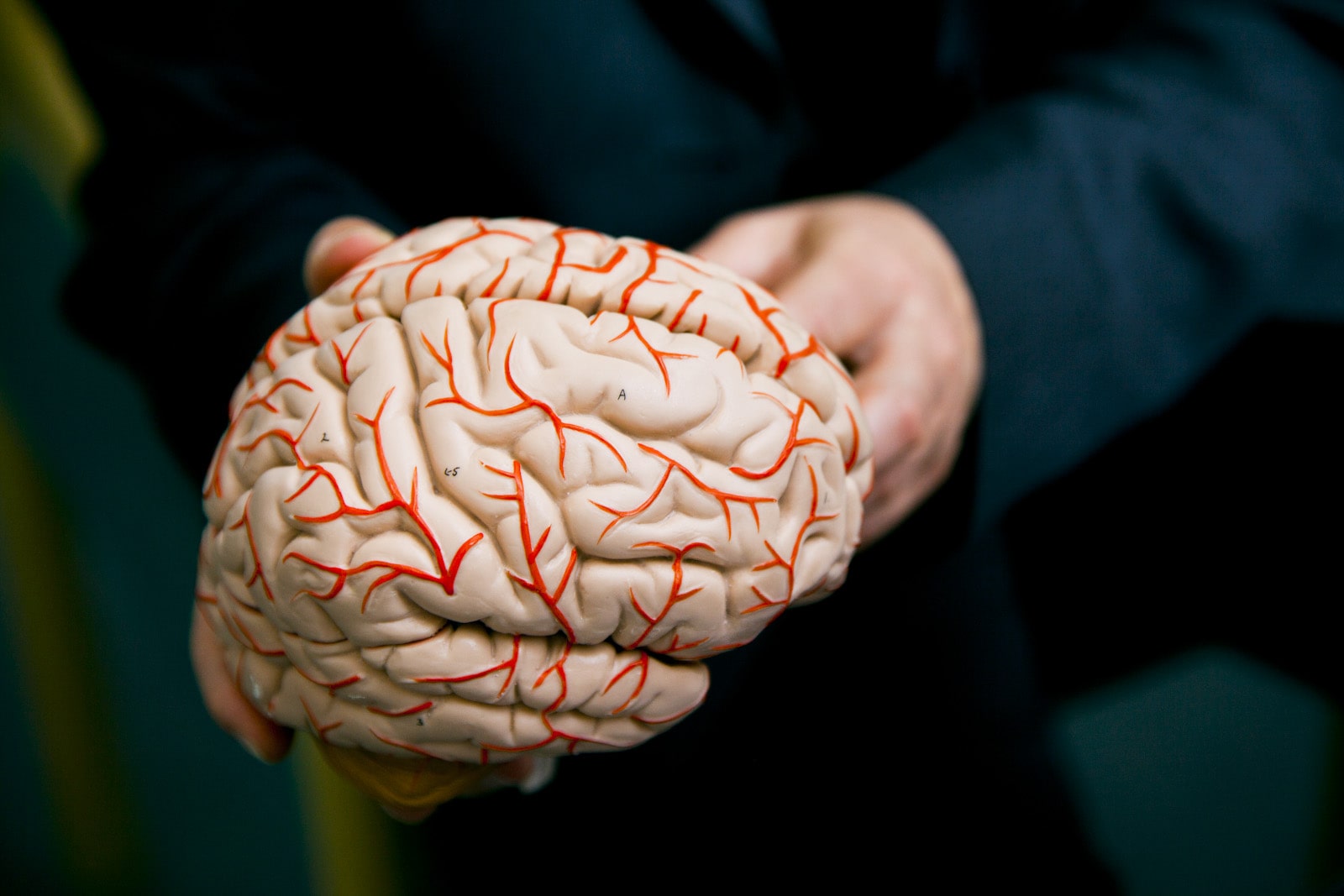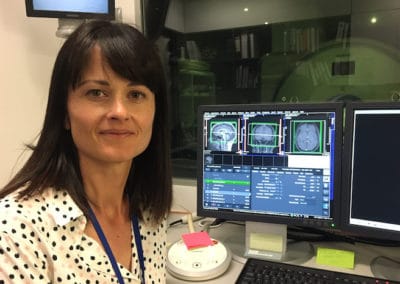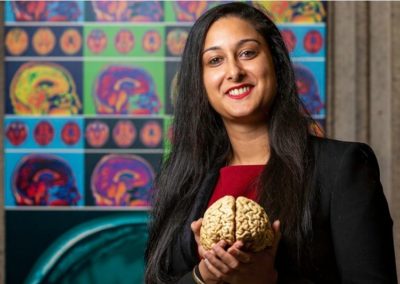Brain Research New Zealand is very pleased to report that it has made a further set of grant awards, for short-term projects running in the first half of 2021. While these grants are necessarily short-term due to the Centre of Research Excellence winding up after June 2021, they are funding very specific and important initiatives that we hope will have a significant influence on future research in these areas through other funding mechanisms. The grants fell into two categories, Strategic grants (see below), and Covid-19 related grants.
In the Strategic category, funding was available either as seed funding for projects aiming for future major funding or as “Added-Value” grants that provide additional funds for investigators wanting to explore new initiatives arising from recently funded BRNZ projects. We are very pleased to be funding the following grants.
Title: Mapping the impact of Covid-19 on people and whānau living with age-related neurological impairment and the organisations that support them
Lead Investigator: Prof Nicola Kayes, AUT; in collaboration with: Age Concern, Alzheimer’s New Zealand, the Stroke Foundation, the Huntington’s Disease Association and Parkinson’s New Zealand.
Summary: This study aims to capture the impact of Covid-19 on NGOs working with people experiencing age-related neurological impairment and the communities they serve. The study will explore the experiences of Covid-19 and the associated pandemic response from the perspective of people and whānau living with age-related neurological impairment and the organisations that support them, and communicate this to the public via a report that makes visible the current and future impact of Covid-19 on community groups and the people they serve.
Title: Blood and tears, alpha-synuclein and Parkinson’s disease
Lead Investigator: Prof John Dalrymple-Alford, University of Canterbury
Summary: Beyond the motor diagnosis, most patients with Parkinson’s disease (PD) also experience decline in thinking and memory (cognitive faculties). Many succumb to dementia once the brain neuro-pathology worsens significantly. Neuropathology occurs when a brain protein called alpha-synuclein goes awry. The misfolded protein becomes toxic to brain cells. We cannot measure alpha-synuclein using brain imaging, so we turn to peripheral tissues, such as blood. The accuracy of blood measures is an open question, but there is also a new unexpected, purer source that we can access easily. This source is hidden in the tear fluid of our eyes. Nerve terminals in the eye’s cornea and tear glands contain many proteins, and this includes alpha-synuclein. Measuring the proportion of abnormal alpha-synuclein in tear fluid may provide a novel window on abnormalities in the brain. So, we will establish if the level of abnormal alpha-synuclein in both blood and tears associates with the severity of clinical symptoms in PD, with an emphasis on cognition. We want to show that this alpha-synuclein reflects brain changes, so we will test if it explains the association between clinical status and brain status, using EEG to measure brain function and MRI to measure brain structure. This research may quickly benefit rapid monitoring of patient status and provide biomarkers for the success of therapeutic trials to slow progression of this debilitating neurological condition.
Title: Implications for Parkinson’s disease of a novel dopamine pathway
Lead Investigator: Dr Peter Freestone, University of Auckland
Summary: Dopamine is a chemical controlling diverse brain functions. When dopamine pathways go awry, a range of neurological disorders develop. Parkinson’s disease (PD) is one of them – a debilitating movement disorder currently affecting about 12,000 New Zealanders. PD is caused by loss of some dopamine-producing cells. We recently discovered a new dopamine pathway in the rat brain. The proposed study will start to investigate this pathway using a model of PD, providing disease relevant insights. This should greatly increase our understanding of dopamine actions in healthy and diseased brain, potentially identifying new therapeutic targets in PD.
Title: Telehealth clinical tools: testing the feasibility, safety, and validity of remote assessments for people with neurological disorders
Lead Investigator: Prof Leigh Hale, University of Otago
Summary: People with neurological disorders suffer from poor health outcomes, such as reduced physical functioning and a high frequency of falls. After falling, their worsened condition limits their performance of daily activities. Consequently, they often become socially isolated. Telehealth is a model which may address these challenges. By increasing access to healthcare, via telehealth, practitioners can improve these patients’ physical functioning and quality of life. Although the NZ Government identified telehealth to achieve its health priorities, evidence about telehealth is needed to inform clinical practice. There is no validated telehealth tool for assessing balance and gait of people with neurological disorders, especially people with PD and stroke survivors. Therefore, this research aims to generate reproducible, feasible and safe assessments for remote use with people who have PD and stroke survivors. Validated assessments enable practitioners to evaluate these patients’ functionality remotely and prescribe exercises, thereby minimising falls risk and improving their QoL.
Title: Building psychosocial and cultural resources for living with age-related neurological impairment
Lead Investigator: Prof Nicola Kayes, AUT
Summary: The role of psychosocial and cultural factors as resources for self-management and outcome for people and whānau experiencing age-related neurological impairment has received limited attention. This is despite evidence that it is not just the absence of negative factors, but also the presence of positive factors (e.g. self-efficacy, hope, post-traumatic growth, cultural identity) that contribute to better long-term outcomes. Psychosocial and cultural resources are developed through person-environment interactions. As such, what happens at the point of care has the potential to support, or threaten, their development. We aim to carry out a realist-informed qualitative descriptive study to develop a rich and practical understanding of how, for whom and under what conditions psychosocial and cultural resources are developed and maintained for people and whanau experiencing age-related neurological impairment. Drawing on a positive psychology perspective will be formative to the development of health and social contexts and ways of working which build psychological capability for self-management and bolster outcome for this population.
Title: Role of agmatine in maintaining healthy brain ageing – a pilot study focusing on cerebrovascular function
Lead Investigator: Prof Ping Liu, University of Otago
Summary: Ageing is an inevitable and multi-factorial process. It leads to cognitive decline and is a major risk factor for neurodegenerative diseases. Given the continuing exponential increase in the aged population, it is critical to reduce the negative impacts of advanced age. Promoting healthy aging would therefore be a turning point in the lowering of age-related disease prevalence. Agmatine (decarboxylated arginine) is a substance naturally present in mammalian organs. Recent research (including ours) suggests the preventive and/or therapeutic potential of agmatine in aging-related cognitive decline and a novel role in extending lifespan. Cognitive decline starts in middle age and continues throughout the aging process. With the support of the Brain Research New Zealand Aging Animal Platform, we carried out a study to determine the role of agmatine in maintaining healthy aging by supplementing agmatine to rats from middle age and then assessing its effects at older ages. The preliminary results strongly support the beneficial effects of agmatine supplementation in maintaining healthy aging. The proposed project aims to determine whether one of the mechanisms is the maintenance of “healthy” cerebral vasculature and function. Positive results will form solid scientific basis for the next step in translational and clinical research.
Title: Trialling community-administered non-invasive burst stimulation to improve upper limb recovery following stroke
Lead Investigator: Prof John Reynolds, University of Otago
Summary: After loss of brain cells occurs following a stroke, surviving nerve cells in areas close to the stroke need to take over the lost function. However, this is difficult to achieve because of overactivity in circuits that tend to ‘turn off’ or ‘inhibit’ the neighbouring surviving areas. One of these overactive circuits originates in the side of the brain opposite the stroke. Our research programme focuses to target these overactive circuits and turn down their activity using an electrical stimulator applied to the brain opposite the stroke. We have studied this idea in models of stroke and found that our approach improves function. With this project we are aiming to determine if this approach is feasible in humans who have arm and hand movement difficulties after stroke. We previously tested a proof of concept using an implanted stimulator, and found positive results in two participants. Here we will test this concept using a new externally applied stimulator. We hope that this approach will lead to greater recovery of hand and arm function than can be achieved by physiotherapy alone, and that it will be able to be rolled out for routine use in clinical practice.
Title: Why are two Xs better than one? Induced pluripotent stem cell modelling of X-linked motor neuron disease/ frontotemporal dementia
Lead Investigator: Dr Emma Scotter
Summary: Brain disorders caused by faulty genes on the X chromosome occur earlier, more severely, or exclusively in males. What then is protecting females? An obvious answer lies in the ability of female cells to “switch off” one of their X chromosomes in each cell, lessening the damaging effect of a faulty gene on that chromosome. In this study we propose to generate neurons in a dish, from people with a faulty X chromosome gene that causes motor neuron disease and frontotemporal dementia. We will test in later studies whether switching off the faulty X chromosome is these neurons really is protective. Once we understand why two X’s are better than one, we will harness this knowledge to develop a new genetic therapy for motor neuron disease and frontotemporal dementia.
Title: Evaluation of blood-based microRNA biomarkers in the Dementia Prevention Research Clinic.
Lead Investigator: A/Prof Joanna Williams
Summary: Alzheimer’s disease effects thousands of New Zealanders. We know now that that the changes underlying Alzheimer’s disease begin in adulthood. This means that current therapies are delivered in the late stages of the disease when irreversible damage to the brain has occurred. We have discovered a group of molecules in blood that might hold the key to early diagnosis. Here, we will test whether these molecules can identify New Zealanders at risk of dementia. This will allow early intervention, improving the health and wellbeing for affected people and their whānau.
Title: Kaiwhakahaere at Dementia Prevention Research Clinics (DPRCs)
Lead Investigators: A/Prof Lynette Tippett (National Director, DPRCs) and Dr Hinemoa Elder In collaboration with: DPRC leadership team
We have also set aside money to fund a project aiming to determine how best to build relationships between Māori communities and the DPRCs, with the long-term aim of increasing engagement of Māori whānau with the clinics. A full project will be considered early in the new year.
Brain Research New Zealand also awarded COVID-19 related grants in this funding round.



